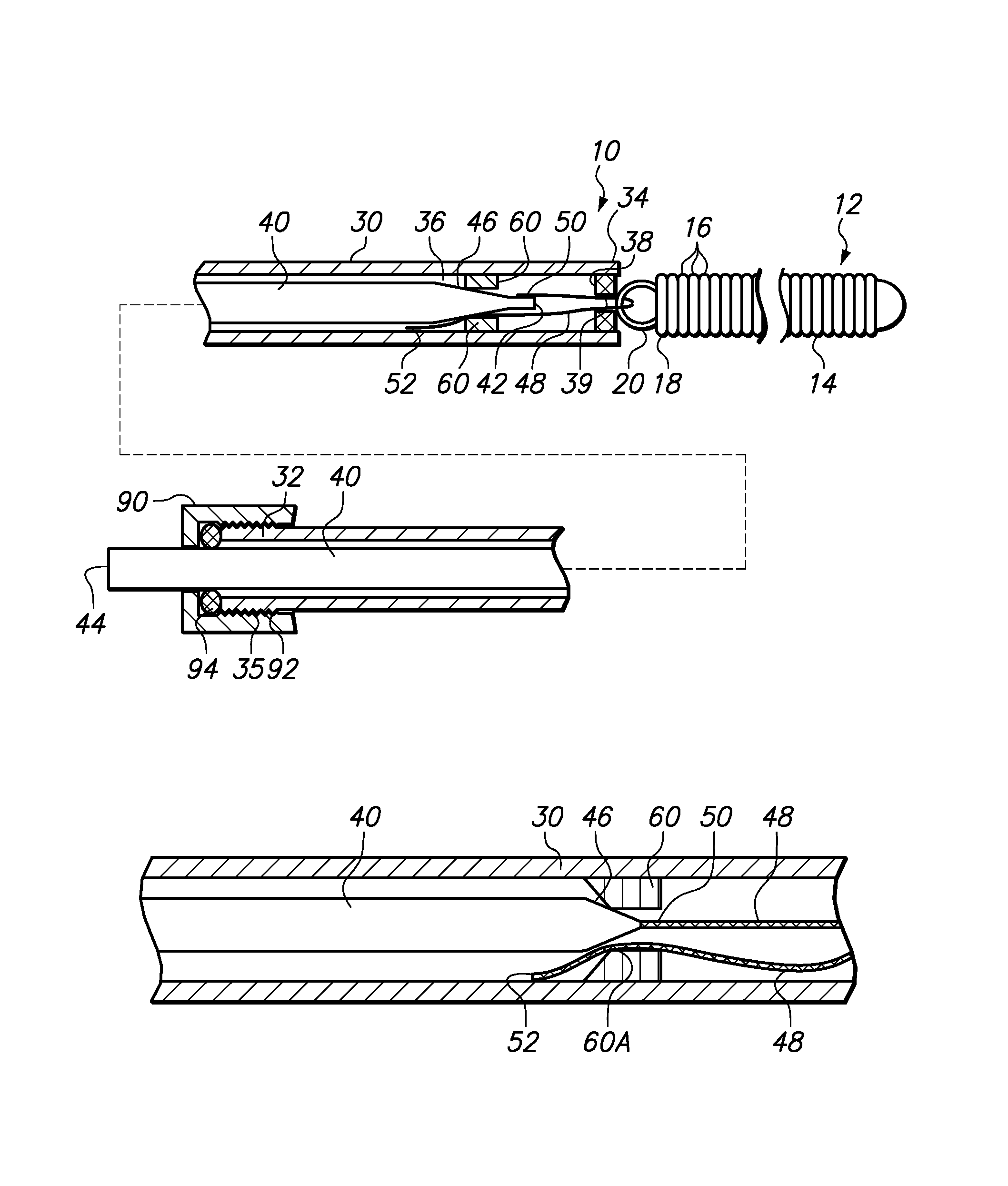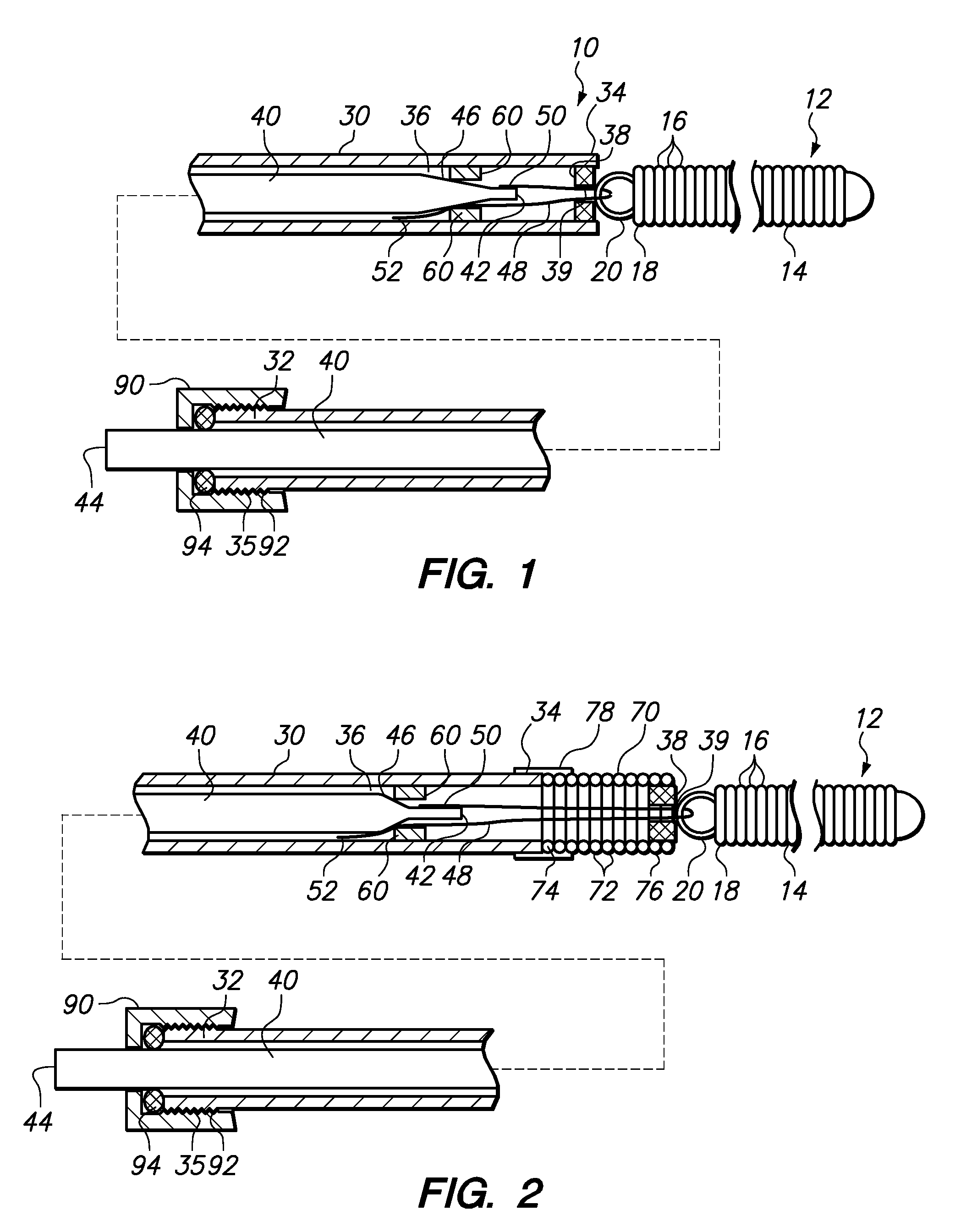Mechanically detachable vaso-occlusive device
a vaso-occlusive device and mechanical detachment technology, applied in the field of vaso-occlusive device implanting systems and delivery devices, can solve the problems of time lag, inability to elapse in electrolysis, and inability to fully discharge, and achieve the effect of eliminating frictional pinching of the filamen
- Summary
- Abstract
- Description
- Claims
- Application Information
AI Technical Summary
Benefits of technology
Problems solved by technology
Method used
Image
Examples
Embodiment Construction
[0027]FIG. 1 illustrates a device 10 for delivering an occlusive element 12 to a vascular space such as, for example, aneurysm 100 (shown in FIG. 5). The occlusive element 12 may be formed as a vaso-occlusive coil 14 created from a plurality of coil windings 16. When manufacturing the vaso-occlusive coil 14, the coil material is wound into a coil shape, which will typically be linear. Generally speaking, the coil 14 is a metallic coil made from a platinum alloy or a super-elastic alloy such as titanium / nickel alloy, known as NITINOL. The diameter of the wire used in the production of the coils 14 may fall in the range of about 0.00025 inches to about 0.006 inches. The coil 14 may have a primary diameter of between about 0.003 and about 0.025 inches, but for most neurovascular applications, a diameter between about 0.008 to about 0.018 inches provides sufficient hoop strength to hold the coil 14 in place within the chosen body site, lumen, or cavity, without substantially distending ...
PUM
| Property | Measurement | Unit |
|---|---|---|
| diameter | aaaaa | aaaaa |
| diameter | aaaaa | aaaaa |
| diameter | aaaaa | aaaaa |
Abstract
Description
Claims
Application Information
 Login to View More
Login to View More - R&D
- Intellectual Property
- Life Sciences
- Materials
- Tech Scout
- Unparalleled Data Quality
- Higher Quality Content
- 60% Fewer Hallucinations
Browse by: Latest US Patents, China's latest patents, Technical Efficacy Thesaurus, Application Domain, Technology Topic, Popular Technical Reports.
© 2025 PatSnap. All rights reserved.Legal|Privacy policy|Modern Slavery Act Transparency Statement|Sitemap|About US| Contact US: help@patsnap.com



